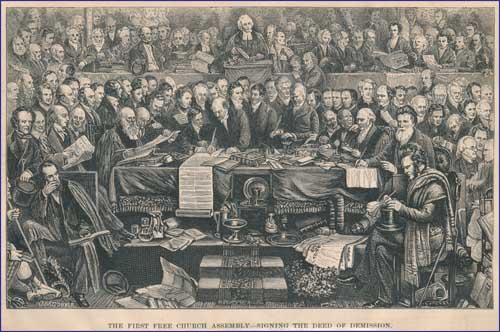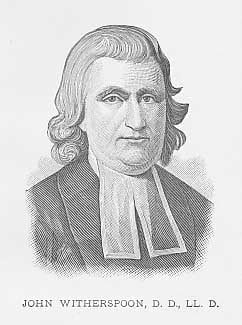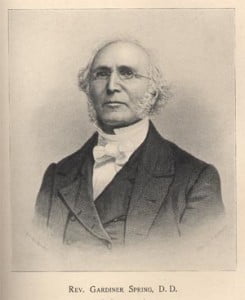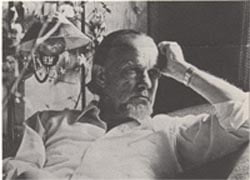Does Doctrine Divide While Mission Unites?
This was the sentiment when the schism of 1837 between the Old School and New School Presbyterians was healed in the days following May 20, 1869. Doctrine had divided the Presbyterian church but it was not insignificant doctrines. It is what made the Presbyterian Church what it was, namely, a biblical, Reformed church according to its subordinate standards, the Westminster Confession of Faith and Catechisms. The Old School, led by Princeton Theological Seminary men, held to it, while the New School Presbyterians, led by men like Albert Barnes and Charles Finney, wanted to weaken it. (We will see all of the issues in an upcoming devotional on the schism on June 5) But for this day, we look at the first day of the General Assembly in 1869 when there was talk of and actions of reunion. Why did this change take place?
The pivotal reason was that a terrible Civil War had taken place in the land which consumed their attention and placed concerns for doctrine to shift to secondary place. Ministers and churches of both Old School and New School Presbyterians were now united in political issues as it had to do with the support of the Federal government. Slavery concerns were now a dead issue in that the war was supposed to bring freedom for blacks. Reconstruction was now the matter on the front burner, and both Old School and New School pretty much agreed on that.
It can also be said that the New School had become more conservative in their theology. They had departed from the Plan of Union with the Congregationalist churches. The New England theology which denied of certain fundamental doctrines was, for the most part, no longer an issue in their ranks. In other words, if there was any problem with the Confessional Standards, it wasn’t an open one. Many of the men and churches who had fought the earlier issues had passed to their heavenly reward, so they were not in the church any longer. Other men were filling their pulpits and positions.
With the opening of this Assembly, the presbyters voted to send the reunion plans down to the Presbyteries. In the intervening months, 113 Old School presbyteries approved it, with 126 out of 129 Old School presbyteries approving the reunion plans as well. Only fifty–two ministers of the Old School Presbyterians protested, led again by Princeton Seminary men, like Charles Hodge.
At the next General Assembly in Pittsburgh in 1870, after the required number of presbyteries had passed it, there was a symbolic march of delegates from each assembly to a certain street in that city, where joining forces, arm in arm, they marched in tandem to Third Presbyterian Church for a mass meeting. A broadening church had begun in the Presbyterian Church in the United States of America. Mission and how to serve the masses via ecumenical means, became the watchword for the church. It would be only a question of time when Reformed conservatives would begin to not recognize the church of their spiritual fathers.
Words to Live By: Many of us are in everyday life led into dozens of compromise situations which are necessary to simply get along with others. But when that compromise involves fundamental doctrines which weaken our Christian faith, then there is a call to stand up and be counted and hold firm to the faith once delivered unto the saints. Are you boldly standing for the historic Christian faith?




